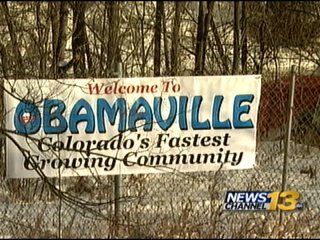With the collapse of the real estate bubble, many normally self-sufficient individuals and families found themselves not only out of work, but homeless. The capacity of emergency shelters was, in many places, exceeded by the flood of the new poor.
The excess, in part, spilled over into already existing and newly formed “tent cities,” especially after a 2009 Oprah Winfrey show spotlighted the problem. Today, years later, and even while the worst of the spike in homelessness appears to be behind us, the problem of tent cities continues.
Today, the problem of tent cities is a product not merely of the original flood of new poor but of the continued enabling of homelessness by do-gooders when it is time to shift to tough love.
Oprah’s show focused on the squatters’ village known as “Tent Town,” north of midtown in Sacramento, California, alongside the Union Pacific Railroad tracks. The ramshackle collection of tents, strewn with filth, housed not only members of the new poor, but many of the old poor: various bums and beggars, alcoholics and drug addicts, and petty and not so petty criminals, many suffering some degree of mental illness.
Although the New York Times described the tent city simply as a shantytown, a local news organization more correctly described it as “Hell’s half-acre.” Soon, the national and local media were scurrying about the country, looking for their version of the story. They were also looking for the ultimate prize of photojournalism, the visage of dejection and despair that might come to characterize the Great Recession.
Along with the media, there were the do-gooders, ranging from stand-up church ministers seeing the image of God in the least among us, to radicals looking to indict the capitalist system, to the more mundane, but much more effective homeless advocates.
With Oprah gone, the city of Sacramento attempted to deal with its little version of hell in the ways that cities usually do, by attempting to identify the particular needs of the squatters and coax them into emergency shelters or other housing arrangements; and, by evicting those who would not leave and then bulldozing the place. But, did I mention the homeless advocates?
Homeless advocates attempted to convince this city and others, that the homeless have a right to shelter and could not be forcibly removed, at least not without appropriate accommodations.
Nevertheless, a year later, the tent city, which had re-located to the banks of the American and Sacramento rivers, and re-titled as “Safe Ground,” was shut down. That did not completely end the story as homeless persons continued to be attracted to the soup kitchens and other amenities offered by do-gooders in the run-down industrial neighborhoods and parkland along the American River.
In Fresno, California, the homeless advocates were more successful. After the city demolished a tent city south of Ventura Boulevard, near F Street, and then a second tent city along Highway 99, homeless advocates got an injunction preventing further destruction of the property of squatters.
When a federal judge ordered the city to make $2.3 million in payments for destruction of the property of squatters, the city was reluctant to clear other tent cities. Within a year, the city was beset by five encampments, some with names such as “New Jack City” and “Taco Flats,” with a total population of 2,000.
Since then, the city of Fresno has been busily engaged in shutting tent cities, being careful to bag up and warehouse the property of their residents.
Among other places to gain nationwide attention were Reno, Nevada; Seattle, Washington; and, Camden and Lakeland, New Jersey. In Kansas City, Kansas, squatters were spied living underground, in make-shift tunnels, in a wooded area of an industrial section of the city. Other “tunnel people” were discovered in Las Vegas, Nevada; St. Louis, Missouri; and, New York City.
“Bridge people” – people living under bridges, overpasses and viaducts – were discovered in Baltimore, Maryland; Providence, Rhode Island; and, Spokane, Washington. In Columbus, Ohio, one of the Bridge people – Ted Williams – made a successful re-entry into civilization when a passerby posted a Youtube video in which he displayed his dulcitone voice.
In some places, spontaneously-arising (or, “mushroom”) tent cities have evolved into, or have come to be replaced by actively-managed and regulated (“regularized”) tent cities. In the state of Washington, where churches have been afforded some legal protection for sheltering the poor, churches and other non-profits sponsor such tent cities.
In St. Petersburg, Florida, but not in Tampa, the Catholic Church was allowed to offer such a tent city. As a result of the denial by Tampa of a zoning variance to the Catholic Church, the wooded areas of Hillsborough County, to the east of Tampa, are thought to be dotted with encampments.
Speaking of rural tent cities, it appears that in the southeast, encampments “back in the woods” predate the bursting of the real estate bubble, and simply grew in number and population afterword.
In Athens, Georgia, for example, a tent city located on private property beyond Lexington Road became visible from the road. The local constable simply ordered the squatters to remove themselves deeper into the woods, the attitude being that as long as they were on private property, and the owner did not object, and they were not being a public nuisance, then it was not a concern.
In order to quantify the tent city phenomenon, I searched the internet for all the tent cities I knew of (e.g., from compilations) or found in the course of the search, seeking in particular to identify when they were started, whether they are on-going or when they ended, and whether they could better be described as anarchic or “mushroom” tent cities, or as rules-based or “regularized” tent cities.
My results are presented in an accompanying chart. Realizing that my data are not yet complete for the current year, it cannot be said that there is yet a downturn in the number of tent cities. While some tent cities have been closed, new ones continue to pop up. In contrast, the number of “chronic homeless” who are without shelter (e.g., living “on the street”) (from HUD’s “point in time” survey) clearly peaked in 2009 and is now falling rather quickly. Why the disconnect?
Historically speaking, it is not unusual for the return of the normal discrimination in charity, public or private, to lag the end of the conditions that caused that discrimination to be relaxed. Following wars or natural disasters or very severe recessions, it is at least understandable that the focus of charity shifts to meeting immediate needs. At a later time, when conditions return more or less to normal, it becomes appropriate to shift again, to a “tough love” orientation.
We saw this during the 19th Century, with the adoption of the private charity system following the very difficult times that followed the Panic of 1837. We saw it more recently during the welfare reform movement that followed the stagflationary 1970s.
The reasons for tough love are both selfish and altruistic. We should want to reduce the number of people who are poor to that number who will always be with us; and, it’s a good thing to reduce the burden of the poor on those who work.
Also, tough love restores the new poor and even some of the old poor to the brotherhood of the productive. Our relation to the overwhelming majority of our fellow creatures should be one of fraternity, not one of sympathy. If I were without a job or a home, I should think that what I would want is an opportunity to work and a home and a place in society that I have earned.
Therefore, for those of us who are productive and who follow the admonition to do unto others what we would want to have done unto us, we should shift from enabling others to not work to insisting that they do.





